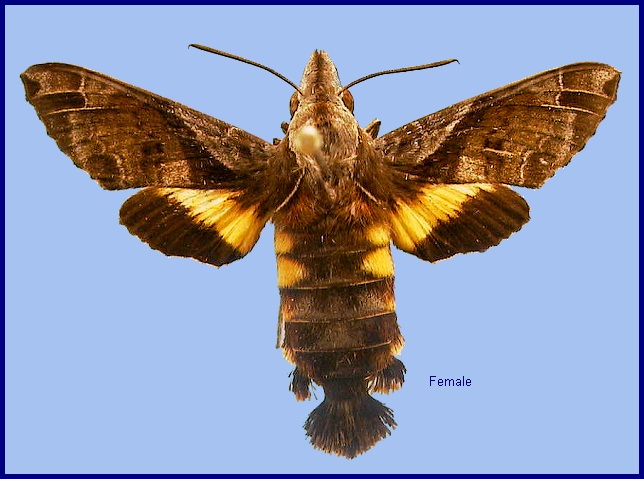
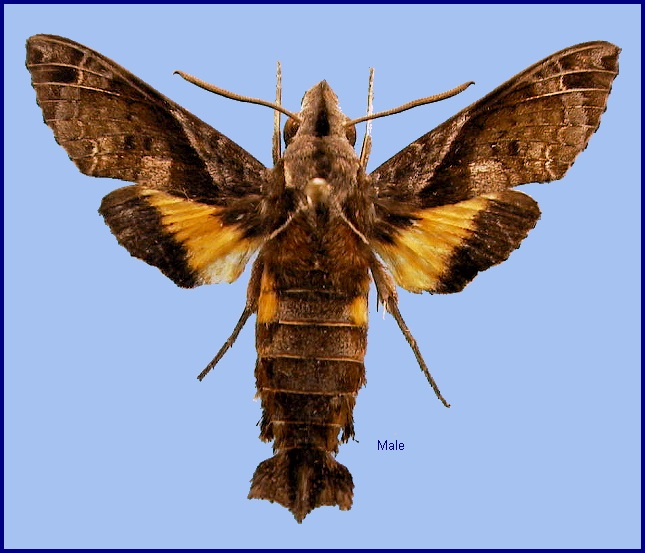
Macroglossum fritzei Rothschild & Jordan, 1903, Novit. zool. 9 (suppl.): 618 (key), 654. Type locality: [Japan,] Loo Choo Islands [Ryukyu Islands], Okinawa.
Synonym. Macroglossum hunanensis Chu & Wang, 1980, Acta zootaxon. sin. 5: 420. Type locality: China, Hunan, Heng Shan.
[Further details on this species in Japan, as well as photos of many stages, can be found on Digital Moths of Japan.]
Differs from all other species of Macroglossum in the very oblique antemedian band of the forewing. Forewing upperside with antemedian lines much more oblique than in any other species, filled with deep brown to form a band that reaches the costal margin distally to the apex of the discal cell, conspicuously bordered with greyish white proximally; first and second lines irregularly dentate, curved costad anteriorly, the space between not filled; postdiscal line dentate, with a sharply marked buffish border; a pale area present between the second discal and the postdiscal line running from vein Cu1 to [CuP]; subapical spot in cell Rs3 somewhat reddish brown, that in Rs4 blackish. Forewing underside reddish-chestnut, the extreme base yellowish, the blackish-brown border very distinct, due to a series of irregular buff-yellow postdiscal patches, that in cell M1 vestigial; two thin dentate lines present within the postdiscal patches. Hindwing underside yellow band broad; the black marginal area consequently narrow, its inner edge almost straight. Hindwing underside reddish anteriorly, with the base and anal areas yellow gradually shading off on the disc only 1 mm. short of the tip of vein 2A; brown border sharply marked, with indications of pale yellow spots at its proximal edge; discal lines reddish.
Head and thorax uppersides dark grey, with a brown mesial line. Mesothoracic tegula with a large, brown, triangular patch conspicuously edged with grey. Abdomen upperside blackish-brown, large yellow lateral patches on segments two and three, and a smaller one on four. Palpus underside reddish grey, a dark triangular lateral patch not sharply marked. Thorax underside pale red centrally, darker laterally. Abdomen underside bright tawny, the apical margins brown, a lateral series of conspicuous buff-yellow spots.
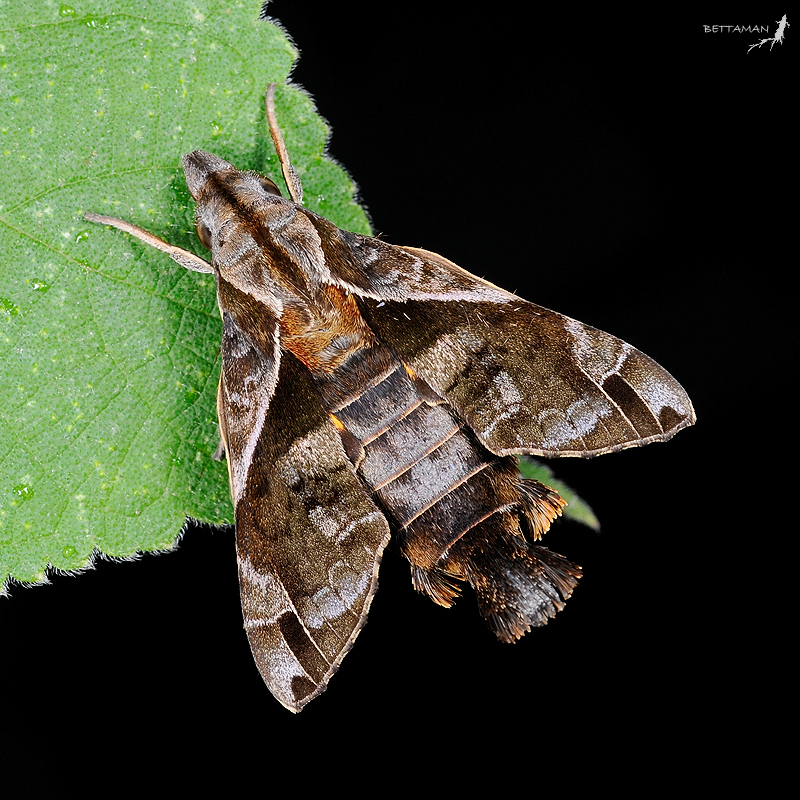
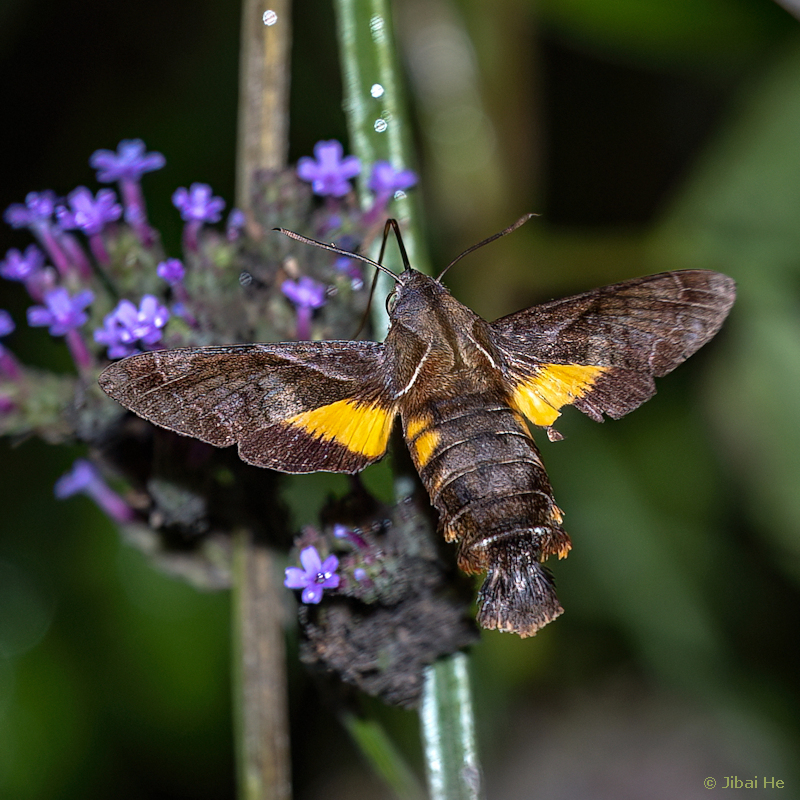
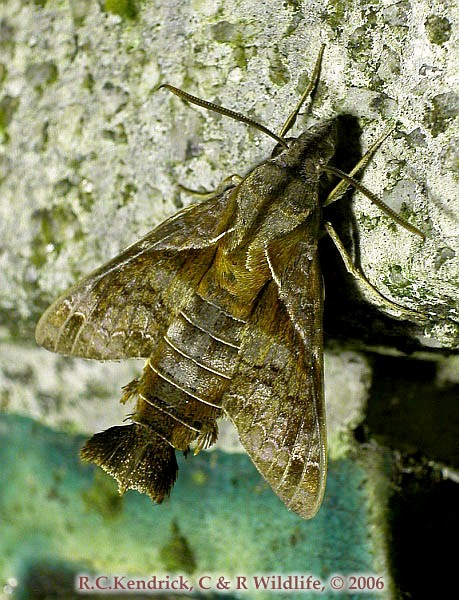
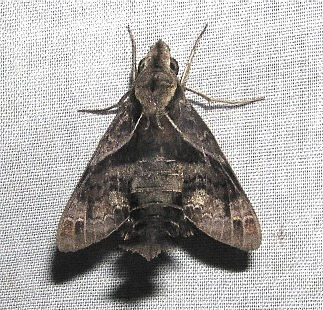
Readily attracted to light at night and seldom flying during the day.
China: i-xii (Hong Kong); v (Hunan); 31.v (Guangdong); vi-viii (Guangdong); viii (Fujian; Zhejiang; Guangxi); x (Guizhou). Taiwan: 18.vii. Japan: 1-23.vi (Ryukyu Archipelago); 10-4.viii (Ryukyu Archipelago); 13.vii-29.x (Honshu); vii (Kyushu; Ryukyu Archipelago); 28.x (Shikoku); 16.xi (Shikoku).
OVUM: Pale green, almost spherical (1.3mm), and shiny.
LARVA: Newly hatched larvae are 3mm long, and olive green with a long black horn. Full grown larvae can be either basically green or brown/purple.
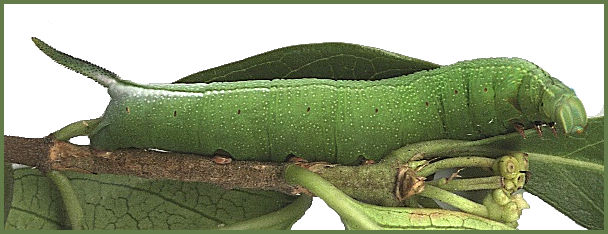
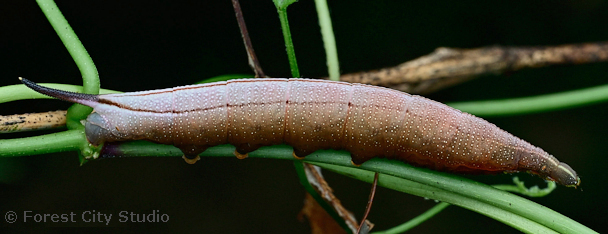
PUPA:
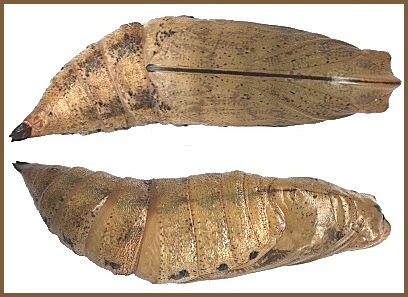
Larval hostplants. Morinda and Paederia (Rubiaceae). In Hong Kong, recorded from Morinda umbellata (David L. Mohn, pers. comm. 2002), and in Zhejiang from Paederia foetida [syn. Paederia scandens] (Xu ZhenBang, pers. comm. 2023).
On Taiwan from Morinda parvifolia, Morinda umbellata, Paederia cavaleriei and Paederia foetida.
Reared from an egg found on Mussaenda parviflora Miq. on Okinawa, Japan (Kimura, 1994), although it preferred Paederia in captivity.
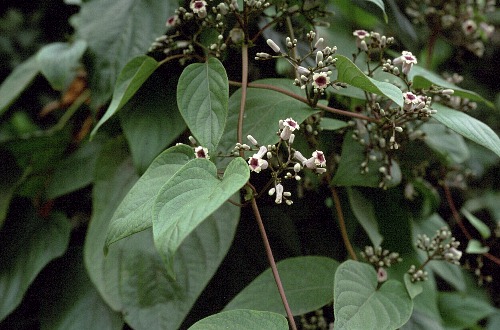
China: Hubei (Xinzhou); Anhui (Yaoluoping Natural Reserve); Zhejiang (Kuocang Mountain Nature Reserve; Zaoxielong, Qingtian County; Nanji Islands National Nature Reserve, Wenzhou; Hangzhou, Tianmu Shan; Shuanglingcun, Lingshan Scenic Area; Ninghai County); Chongqing (Chongqing); Guizhou (Qiandongnan Miao and Dong Autonomous Prefecture); Hunan (Dayong; Heng Shan; Daweishan; Zhouluo Longtan Scenic Area); Fujian (Guangze, 1200m); Guangdong (Lianping; Longtou Shan; Nanling National Forest Park, 1100m (Morishita & Kishida, 2000); Yangjiang); Hong Kong (North Point); Guangxi (Yulin ('Guangxi Mantis King', iNaturalist 2022); Chongzuo); Hainan (Hainan Bawangling National Nature Reserve; Hainan Tropical Botanical Garden).
Taiwan: Taipei (Neihu); Yilan Hsien (Fushan Botanical Garden); Miaoli Hsien (Tai'an).
Japan: Honshu (Nashimoto; Shinshiro); Shikoku (Matsuyama; Niyodogawa); Kyushu (Hikosan); Ryukyu Archipelago (Amamio-jima; Okinawa (Kimura, 1994; Manabe et al., 2014; Miyano, 2015); Iriomote-jima; Yaku-jima; Ishigaki-jima (Kishida & Shirakawa, 1988)).
Southeastern China, Taiwan, central and southern Japan, Thailand, Vietnam (Le & Vu, 2024) and Borneo.
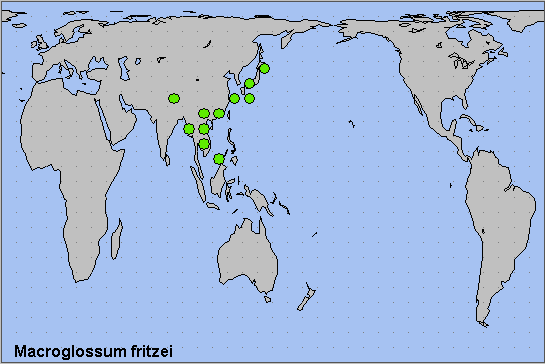
 Return to Sphingidae of the Eastern Palaearctic species list
Return to Sphingidae of the Eastern Palaearctic species list